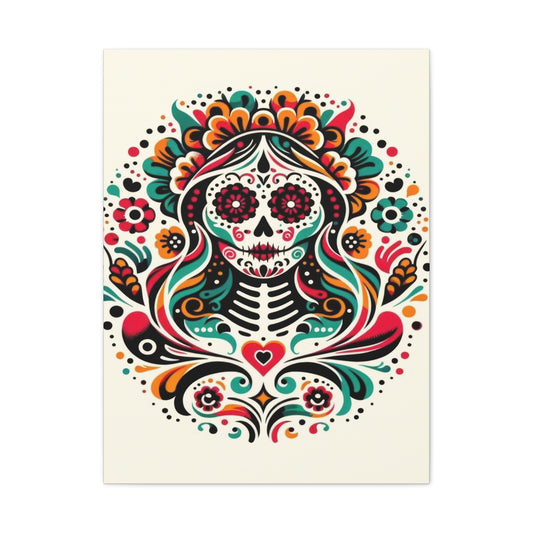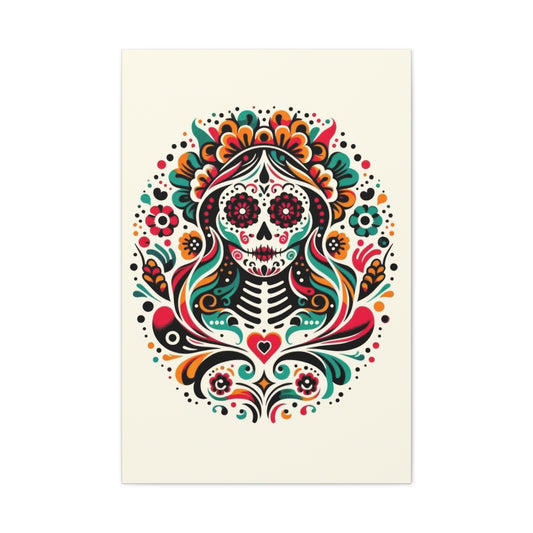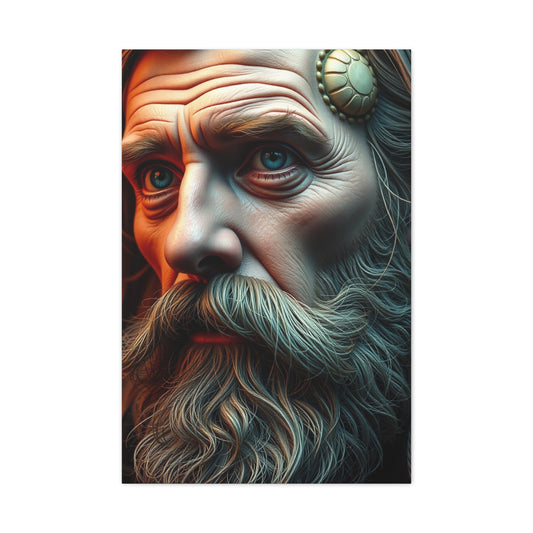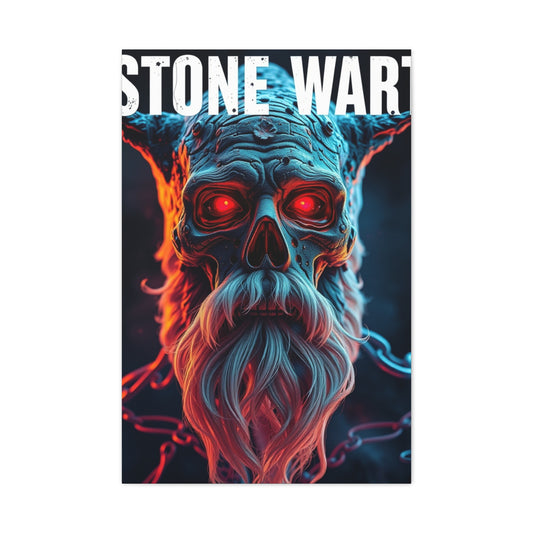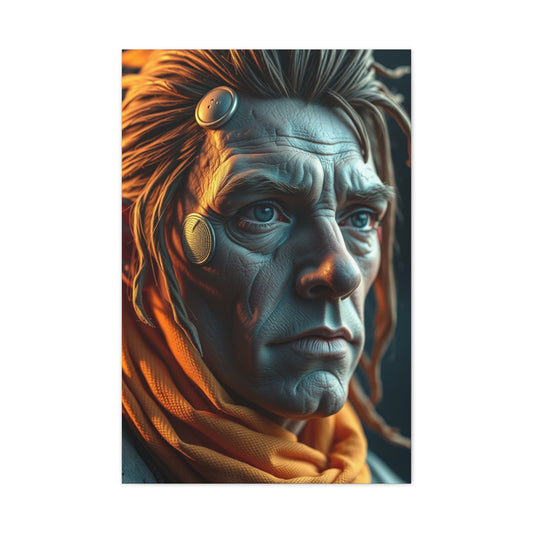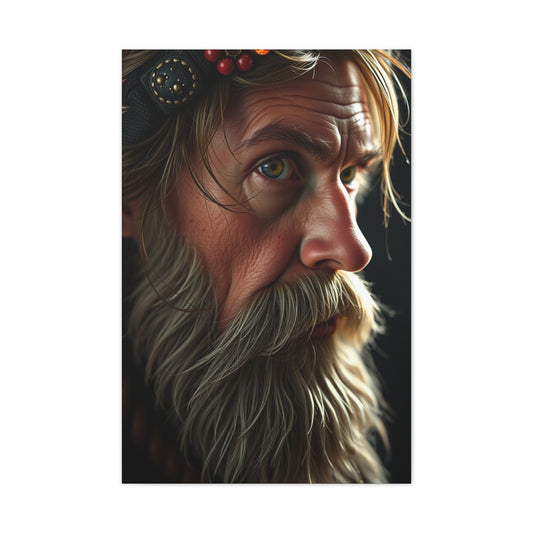Surreal photography transcends conventional imagery by merging the real with the unreal, turning the ordinary into extraordinary visual poetry. This evocative genre allows artists to tap into their subconscious, exploring metaphors, dreams, fears, and fantasies through crafted visuals that defy logic and expectation.
Whether you're an aspiring photographer or a seasoned visual storyteller seeking fresh inspiration, surrealism opens the floodgates to boundless creativity. In this in-depth guide, we reveal 14 unique surreal photography ideas drawn from visionary artists around the world. Each concept offers insight into how you can bend reality, challenge perception, and create unforgettable imagery that resonates deeply with audiences.
Submerge into Fantasy: Ethereal Underwater Portraits
In the realm of surreal photography, few environments rival the transformative power of water. Beneath its rippling surface lies a world untethered by gravity or noise, a domain where perception is subtly but profoundly altered. The refraction of light, the softening of sound, and the gentle resistance of movement coalesce to form a dreamlike atmosphere. These innate characteristics render underwater settings a perfect canvas for artists exploring the ethereal.
Photographers such as Velizar Ivanov embrace the aquatic environment not merely as a backdrop but as a medium of expression in itself. In his mesmerizing portraits, subjects appear to float between dimensions. Flowing fabrics and drifting hair suspend in fluid motion, contributing to a visual poetry that transcends time and space. Each frame becomes a silent reverie, a suspended moment steeped in tranquility and mystery.
Underwater portrait photography distills human emotion to its purest, most delicate form. It removes external distractions and grounds the viewer in the immediacy of the subject’s presence. Expressions are softened, gestures appear almost ritualistic, and body language communicates on a subconscious level. This surreal approach doesn't just portray people; it reveals their inner states—fragility, serenity, longing, or transformation—expressed without the constraints of terrestrial reality.
|
Related Catagories: |
Moreover, the unique physics of underwater photography allow for visual experimentation. Natural elements like sunbeams piercing the surface or reflections dancing on the sandy seabed enhance the surrealism. Advanced camera techniques combined with thoughtful composition can amplify these effects, creating imagery that feels suspended in a liminal space between waking and dreaming. There’s a subtle tension in these scenes: a delicate balance between beauty and isolation, between serenity and the vast unknown.
Underwater surreal portraiture invites the viewer to let go of logic and embrace the emotive. This genre unlocks access to the subconscious, where the visual and symbolic merge into something hauntingly beautiful. Whether captured in open water, pools, or constructed environments, these portraits remind us that human connection and introspection can flourish even in the most alien settings.
The technical challenges of underwater photography—buoyancy control, light balance, clarity—are counterbalanced by the artistic payoff. Each session is a choreography of breath, movement, and timing. Models must adapt to holding poses, often with their eyes open and expressions composed, despite the instinctual discomfort. This dedication infuses the images with authenticity and vulnerability, traits central to the surreal aesthetic.
In addition, water naturally distorts proportions and blurs edges, adding layers of abstraction. When photographed correctly, limbs stretch like brushstrokes, fabrics swirl like ink, and bubbles rise like punctuation marks in an unspoken language. These elements form an integral part of storytelling, pushing each photograph beyond mere documentation and into the realm of visual metaphor.
In the digital age, post-processing techniques can further elevate these underwater fantasies. Color grading, contrast adjustments, and subtle compositing allow photographers to enhance the surreal ambiance without overshadowing the raw emotion captured in-camera. When done tastefully, the final image becomes a hybrid of the tangible and the intangible—a visual artifact of the imagined.
Ultimately, ethereal underwater portraiture challenges viewers to pause and reflect. It asks them to look beyond the surface—both literally and metaphorically—and engage with photography as a tool for psychological exploration. These dreamlike visuals invite interpretation, triggering introspective questions about identity, memory, and belonging. As we gaze into the liquid mirror of these images, we may find reflections not of the subject, but of ourselves.
Explore the Deep Unknown: Mystical Marine Landscapes
Descending beyond the sunlit shallows into the abyss, we encounter an environment that seems untethered from the known world. The deeper one ventures into the ocean, the more surreal the visual experience becomes. In this spectral world, color fades, pressure builds, and life takes forms stranger than fiction. This makes marine landscapes one of the richest sources for surreal imagery in contemporary photography.
Photographer Alexandra Rose leverages these profound depths as an expansive stage for visual exploration. Her lens captures submarine vistas populated by coral cathedrals, glowing plankton, and shoals of fish that move like sentient clouds. Each composition suggests not just biodiversity, but a kind of silent choreography—an ancient rhythm pulsing beneath the surface of our collective awareness.
These underwater panoramas provoke a sense of awe, curiosity, and humility. As viewers, we’re reminded of how little we truly understand about the ecosystems just below our feet. The ocean becomes a metaphorical underworld, a subconscious mind of the Earth teeming with secrets. Through the surrealist lens, this hidden territory becomes a visual allegory for introspection and personal transformation.
Unlike surface photography, which depends heavily on sunlight and predictable conditions, deep-sea imagery demands a different approach. Light behaves erratically below certain depths, and visibility can shift with every movement. This unpredictability lends itself to abstraction. A shaft of light might illuminate an otherwise invisible creature; a cloud of silt may distort a composition into near-impressionism.
Photographers working in this space must be attuned not only to their equipment but to the rhythms of the sea itself. Patience is crucial. It may take hours to find a scene where all elements align, or seconds for that scene to vanish into the blue. The resulting images carry an inherent impermanence, a fleeting quality that amplifies their surreal nature.
Furthermore, the marine environment is filled with inherently fantastical elements. Creatures with translucent skin, bioluminescent tendrils, or hypnotic patterns appear more like imaginings than biological facts. These lifeforms, when captured skillfully, can seem plucked from dreams or myths. The coral reefs themselves often resemble surreal sculptures—twisting forms that defy architectural norms.
Many photographers choose to frame these subjects in ways that blur scale and orientation. Is that an underwater canyon or the side of a mountain? Are we looking at a jellyfish or a floating chandelier? These ambiguities compel viewers to question their understanding of space and context. It’s a subtle form of cognitive dissonance that gives surreal marine photography its emotional depth.
The color palette of these landscapes also plays a crucial role. Cooler hues dominate—blues, purples, greens—instilling a meditative, almost melancholic tone. Occasionally, a pop of vibrant red or yellow punctuates the calm, drawing the eye like a whispered revelation in a sea of silence. This dynamic use of color enhances the mood and contributes to the atmospheric intensity of each image.
Ultimately, mystical marine landscapes offer more than just visual allure. They are philosophical spaces—arenas where the viewer is asked to confront the alien and the unknown. In a time where we often seek control and clarity, these submerged compositions offer an invitation to embrace ambiguity and fluidity. They remind us that not all truths can be seen clearly, and some beauty lies forever just out of reach.
Surreal underwater photography, whether focusing on human portraits or seascapes, stands as a testament to the limitless nature of visual storytelling. It invites creators and viewers alike to let go of certainty and enter a world where emotion, metaphor, and imagination reign supreme. By immersing ourselves in these submerged dreamscapes, we find a rare and valuable perspective—not only on art, but on the mysterious depths within ourselves.
Erase Identity: Faceless Portraiture with Symbolic Meaning
The human face is perhaps the most powerful visual marker of identity, emotion, and social connection. It’s how we read others, recognize ourselves, and communicate without words. In surreal photography, removing this central feature introduces a profound conceptual shift. Faceless portraiture transcends typical characterization, compelling the viewer to seek meaning beyond the obvious. In the hands of artists like Anna Maghradze, this creative choice becomes a vessel for storytelling and emotional exploration.
When a subject’s face is erased, blurred, replaced, or obscured entirely, the image immediately challenges conventional interpretations. It disconnects the subject from familiar markers of gender, age, mood, or origin, creating a blank canvas for symbolic projection. In such compositions, the absence becomes more powerful than presence. What we cannot see becomes what we most want to understand.
Faceless surreal portraits dive deep into the emotional undercurrents of modern existence. The feelings of estrangement, depersonalization, or emotional numbness that many experience in today’s digitized and hyperconnected society are vividly expressed through these visuals. A figure without a face becomes every person and no one at once—a universal symbol of the anonymous self adrift in a crowded world.
This visual metaphor finds resonance in urban life, where individuals can feel both hyper-visible and entirely unseen. The faceless subject might represent a desire to disappear, a reflection of internal conflict, or the fragmentation of identity in an overstimulated world. Each interpretation depends on the viewer’s perspective, which is what gives this technique its power.
Technically, artists achieve this effect through diverse methods: in-camera masking, physical obstruction, makeup artistry, and most often, post-production digital manipulation. Each method introduces a different texture to the final image. A blurred visage may evoke a dreamlike detachment, while a digitally erased face feels more surgical and intentional, invoking themes of loss or dehumanization.
Color grading and composition further amplify the emotional resonance. Monochrome palettes can heighten the sense of desolation or timelessness, while stark contrasts and shadows can evoke fear, mystery, or melancholia. The setting—whether a bleak urban alleyway, a foggy forest, or an empty room—adds contextual weight to the portrait, grounding the faceless subject in a specific emotional or symbolic landscape.
Another common approach in faceless surreal photography involves reflection and duality. Mirrors without reflections, subjects turned away from the viewer, or masks that conceal rather than reveal are all elements that question the nature of self-awareness and perception. These motifs often symbolize internal conflict, secrecy, or the idea that true identity is unknowable—even to oneself.
In a world saturated with selfies, digital personas, and constant visual documentation, faceless portraiture rebels against the obsession with visibility. It asks profound questions: Who are we when nobody is watching? What remains when our outer image is stripped away?
This genre of surreal photography also aligns with philosophical and psychological inquiry. By reducing the subject to a body, a silhouette, or an outline, it parallels concepts from existentialism and psychoanalysis, where identity is seen not as a fixed construct but as something in flux. In this way, faceless photography functions as a visual essay, not only challenging our assumptions about representation but inviting viewers into an abstract, internal dialogue.
Faceless surreal portraits are not only visually striking—they are emotionally potent, haunting, and unforgettably symbolic. They speak not just of who we are, but of who we fear to become, or who we dream of being beneath the mask of modern life.
Transform the Ordinary: Experimental Food Art
Food is one of the most common and universal subjects in photography—yet, in the surrealist realm, it becomes anything but ordinary. Where traditional food photography emphasizes texture, freshness, and aesthetic appeal, surreal food photography uses edibles as sculptural and conceptual material, often disturbing in its presentation and deeply layered in meaning.
Artists like Elijah O’Donnell are pioneers of this provocative sub-genre, taking familiar ingredients and subverting expectations to craft visuals that challenge comfort and convention. In his imagery, an apple is no longer a symbol of nourishment or desire—it becomes a vessel of decay, a token of manipulation, or an emblem of corrupted purity.
By presenting food in uncanny, alien, or grotesque ways, surreal artists force us to reassess our relationship with consumption, indulgence, and nature. A bruised fruit may suggest environmental degradation, while a twisted pastry could symbolize societal excess or personal vice. These images are rarely literal. Rather, they work through visual metaphor and emotional suggestion, inviting viewers to linger, question, and decode.
Surreal food compositions often employ unconventional settings, unexpected props, and high-contrast lighting to achieve their unsettling aesthetic. A single black apple on a pitch-black plate, lit only from beneath, transforms from sustenance into symbol. The stark contrast elicits a visceral reaction, challenging our expectations about beauty and familiarity.
Textures and color manipulation also play a significant role in creating this eerie atmosphere. Overly smooth surfaces can feel artificial or synthetic, while hyper-detailed close-ups of mold, blemishes, or unnatural coloration evoke discomfort. These deliberate distortions turn everyday nourishment into objects of fascination and revulsion.
Furthermore, food has deep cultural and psychological associations. It connects us to heritage, memory, pleasure, and even guilt. Surreal photography uses these connections to challenge viewers on a subconscious level. A childhood treat presented in a monstrous form might stir feelings of nostalgia and horror simultaneously. A pristine fruit sliced to reveal wires or ash speaks to fears of industrial contamination and artificiality in our diets.
Experimental food photography often intersects with environmental commentary. As societies grapple with issues like food waste, overconsumption, and the consequences of agricultural practices, surreal visuals become powerful storytelling tools. The medium doesn’t preach; it provokes. Through strange and evocative imagery, it communicates the imbalance between what is natural and what has been manipulated for profit or convenience.
On a more personal level, surreal food images can also reflect internal struggles. Disordered relationships with food, body image issues, or emotional dependence are all subjects that can be explored symbolically through altered culinary elements. By making the edible inedible—or the desirable repulsive—artists illustrate the tensions between need and control, pleasure and punishment.
What elevates this genre is not just its creativity, but its ability to communicate without words. A plate of inky black noodles suspended in midair tells a story of chaos and stillness. A melting cake embedded with eyeballs becomes a parable of surveillance and indulgence. These are not mere visual gags or Photoshop tricks—they are crafted images, dense with cultural, emotional, and philosophical implications.
In a world where food imagery is often sanitized and idealized, surreal food photography restores complexity. It recognizes that our relationship with food is not always harmonious or simple—it is layered, emotional, and sometimes deeply conflicted. Through visual disruption, it reclaims space for discomfort, contemplation, and imagination.
Both faceless portraiture and surreal food photography push the boundaries of visual art by dismantling expectations and reconstructing reality through abstraction. They challenge the viewer to find meaning in absence, distortion, and contradiction. In doing so, they reaffirm surreal photography’s unique ability to capture not just what is visible—but what is deeply, often painfully, felt.
Reveal Hidden Selves: Illuminated Blacklight Portraits
Blacklight portraiture is a striking branch of surreal photography that explores what remains unseen in ordinary light. It harnesses ultraviolet illumination to uncover vibrant, hidden layers that represent the deeper, often invisible aspects of human identity. This radiant technique transforms traditional portraiture into a vivid introspection of spirit, symbolism, and self-expression.
|
Related Catagories: |
Through the use of reactive paints, fluorescent pigments, and meticulously composed lighting, blacklight photography invites the viewer into an alternate visual dimension. It’s a realm where the natural laws of light and color are subverted, creating glowing figures that seem more mythological than mortal. Artists such as Danilo Batista have mastered this surrealist technique to create portraits that visually articulate the dual nature of the human experience—what we reveal versus what we conceal.
At the core of these glowing images lies a narrative about identity, perception, and emotional layering. Human beings often live double lives: the external, curated self that interacts with the world and the internal self where desires, fears, and truths reside. Blacklight photography bridges these two realms. The glowing designs painted onto the skin symbolize thoughts, emotions, or spiritual essences made visible under special conditions—conditions that mimic moments of vulnerability, revelation, or transformation.
The surreal impact of these portraits emerges not just from their color, but from their symbolism. Tribal patterns may hint at ancestral memory, spiritual journeys, or collective unconscious archetypes. Abstract swirls and celestial symbols can allude to cosmic connection or metaphysical awakening. The use of color—bright greens, ultraviolet blues, neon purples—conjures imagery that feels futuristic yet primal, as if the subject has stepped into another realm, or emerged from one.
Unlike conventional lighting that flatters and defines, ultraviolet light distorts and dramatizes. It sharpens certain contours while dissolving others, creating a paradoxical visual texture where the subject is both defined and obscured. This allows for profound artistic storytelling. A glowing eye that seems to float in darkness, a hand patterned with luminescent runes, or a face split between color and shadow all become tools of psychological narrative.
The process behind blacklight surreal photography is both technical and performative. Subjects must be painted using fluorescent pigments that respond precisely to UV light. The artist’s hand becomes part painter, part illusionist—designing patterns that interact with the body’s curves and contours in unpredictable ways. These compositions are carefully choreographed under controlled lighting, with backgrounds often muted or blacked out to heighten the sense of isolation and focus.
The post-production stage is where further refinement occurs. While purists may avoid extensive editing, many surrealists use digital enhancement to manipulate saturation, contrast, and glow, emphasizing the mystic energy of the composition. The end result feels suspended in time and space—images that seem to pulse with unseen energy, breathing life into otherwise silent photographs.
Conceptually, blacklight portraits resonate with themes of inner revelation, transformation, and transcendence. They echo ancient rituals of body art and spiritual adornment, while also embracing futuristic aesthetics that explore the synthesis of body, mind, and environment. They act as a mirror to internal states—often exploring self-discovery, empowerment, or metamorphosis.
In an era where identity is increasingly fluid and multifaceted, this genre of surreal photography provides an outlet for visualizing the layered complexity of the self. The glowing designs etched in light speak to parts of ourselves we may not always acknowledge—the dreams we chase in silence, the scars we carry in private, and the truths that only emerge under specific conditions.
Ultimately, illuminated blacklight portraits aren't just visual marvels. They are artistic invitations to see beneath the surface, to embrace the unknown within, and to explore the radiant, surreal textures of human consciousness.
Alter Object Scale: Dreamscapes of the Impossibly Sized
Another pillar of surreal photography is the manipulation of scale—taking familiar objects and rendering them absurdly large or impossibly small to disrupt our perception of space, logic, and symbolism. Altering size within visual composition turns ordinary scenes into fantastical realms, allowing objects to adopt new meanings and evoke a spectrum of emotion. Anya Anti’s imaginative photography demonstrates this approach beautifully, with scenes like a woman tethering the moon or walking through giant keyholes in surreal dreamscapes.
The alteration of object scale plays with power dynamics and symbolic inversion. A subject dragging a colossal moon can suggest dominion over destiny, a burden of cosmic weight, or an intimate bond with the divine. Conversely, shrinking a human subject next to a towering object—like a teacup the size of a building—can emphasize vulnerability, insignificance, or childlike awe.
The key to this surreal photography technique lies in its storytelling potential. Scale becomes metaphor. A giant birdcage may symbolize psychological imprisonment. An outsized clock can reflect time’s oppressive grip. The distorted proportions awaken latent associations in the viewer, allowing each image to resonate on a personal, interpretative level.
Technically, this technique demands precision and creative foresight. Photographers often combine digital compositing with practical staging, layering separate photographs or digitally altering size ratios to achieve seamless integration. Attention to lighting, perspective, and shadow is essential for creating a convincing visual illusion. Poorly aligned lighting or scale mismatches can shatter the illusion, while skillfully blended scenes can achieve a magical realism that captivates.
Beyond technical mastery, choosing the right objects to enlarge or shrink is a deeply intentional process. Everyday items—books, chairs, keys, fruits—take on monumental or minute scales that reframe their meaning. A tiny door in an open field might represent opportunity hidden in plain sight. A mountain-sized violin could symbolize artistic obsession or the haunting presence of past passion.
Color and atmosphere also contribute significantly to these altered scale compositions. Muted palettes can lend a nostalgic, dreamlike quality, while vibrant hues may enhance the surrealism and emotional charge. The environment surrounding the manipulated object—a barren desert, a forest canopy, a city street—becomes part of the story, contextualizing the metaphor and expanding the emotional landscape.
This style of visual storytelling harks back to fairy tales, folklore, and myth, where scale distortion is a common device. Think of Alice shrinking in Wonderland or the giants in Norse mythology. Surreal photography taps into this shared narrative heritage, reinterpreting ancient symbols through modern tools and contemporary sensibilities.
Emotionally, altered scale photography invites viewers to reconsider their place in the universe. It forces reflection on themes of control, insignificance, imagination, and ambition. In some frames, the viewer may feel a sense of empowerment; in others, existential humility. The elasticity of scale echoes the elasticity of experience—how something can feel enormous in memory or minuscule in hindsight.
In the hands of a skilled surrealist, scale manipulation becomes a portal to psychological exploration. The viewer is asked not to believe the image, but to feel it. The altered object size is not a gimmick; it’s a poetic device, a visual language that conveys mood, metaphor, and message without relying on words.
Whether evoking wonder, satire, introspection, or fantasy, surreal dreamscapes shaped by object scale remain among the most captivating expressions in photographic art. They remind us that reality is malleable, that meaning shifts with context, and that the surreal isn’t an escape from reality—but a deeper dive into its endless interpretations.
Shrink Yourself into Your Vision
Miniaturization in surreal photography is a poetic technique that transforms ordinary spaces into immense, emotionally charged arenas. By shrinking the human form and placing it within oversized, familiar surroundings, photographers create whimsical yet deeply introspective narratives. Joel Robison, a pioneering artist in this imaginative style, uses digital compositing and conceptual storytelling to reframe reality from a pint-sized perspective.
In these compositions, the photographer often becomes the protagonist—reduced in scale, navigating a world where everything seems magnified. A teacup becomes a swimming pool, a matchstick a towering torch, and a dandelion transforms into a swing set. These surreal scenarios are crafted not merely for visual spectacle but as metaphors that reflect emotional truths about vulnerability, curiosity, and the human spirit.
The act of shrinking oneself in imagery carries profound symbolic weight. It invites the viewer to reconnect with their inner child, evoking themes of wonder and innocence. Yet it also highlights feelings of fragility and solitude, as the miniature figure traverses vast environments that dwarf them. This duality creates a compelling psychological tension—playful and lighthearted on the surface, but filled with deeper existential undertones.
Robison’s surreal self-portraits often place his reduced figure in mundane yet symbolically rich settings—inside books, atop coffee mugs, beneath blooming flowers. Each composition suggests a story without explicitly telling it. The small scale of the subject emphasizes reflection, introspection, and the often overlooked beauty of everyday life. It’s a form of photographic storytelling where scale becomes synonymous with emotional magnitude.
Technically, these surreal photographs require meticulous planning and execution. The artist typically captures the background environment and the miniaturized subject separately, later merging them using digital editing tools. Lighting, angle, and shadow must be matched precisely to maintain the illusion. The resulting imagery feels cohesive and magical, yet grounded in enough realism to invite emotional engagement.
Beyond visual appeal, miniaturization encourages viewers to see their surroundings in a new light. What is often ignored or dismissed becomes monumental when seen from a micro-scale perspective. A simple leaf might appear as an expansive terrain, a book page as an infinite landscape of thought. These reinterpretations inspire mindfulness, inviting us to pause and appreciate the microcosms hidden within the macro world.
Moreover, by reducing the scale of the human subject, the photographer plays with power dynamics. In some scenes, the tiny figure appears lost or overwhelmed, suggesting the anxiety of navigating an immense and complex world. In others, the same figure may appear empowered—conquering mountains of toast, sailing through puddles, or exploring oversized objects as if embarking on grand adventures. These visual contrasts allow the photographer to explore a spectrum of human emotion from joy and awe to introspection and melancholy.
This surreal approach also lends itself to metaphorical storytelling. A shrunken artist painting on a matchbox may represent the challenge of creating meaning within constraints. A figure peering over the rim of a teacup might symbolize the threshold between comfort and risk. Such imagery engages the audience not just visually, but intellectually and emotionally.
Miniaturized self-portraits resonate in today's digital age, where personal identity is often curated and manipulated. Shrinking oneself visually can be interpreted as a metaphor for feeling unseen or undervalued, particularly within the overwhelming scale of digital noise and societal expectations. Yet it can also reflect an intentional act of humility, a reminder that sometimes the smallest gestures or ideas carry the greatest significance.
Ultimately, this form of surreal photography invites us to reconsider scale—not just physical but emotional, symbolic, and narrative. It offers a unique lens through which we can examine the balance between individuality and the vastness of the world. Through enchantment and introspection, these images whisper truths that are often drowned out in the noise of everyday life.
Bend the Earth: Surreal Horizons and Tilted Landscapes
In surrealist photography, one of the most mesmerizing and intellectually stimulating techniques involves the manipulation of landscape orientation and curvature. By bending the earth and distorting the horizon, artists create spatial illusions that challenge perception and unsettle visual expectations. Aydin Buyuktas, a master of this mind-bending method, has pioneered a body of work where terrestrial forms fold, roll, and rise into the sky in defiance of natural laws.
These altered landscapes are visually arresting. They often depict familiar environments—fields, streets, stadiums—transformed into undulating surfaces or vertically curving scenes. This architectural surrealism invites the viewer into a space where physical laws no longer apply, and where gravity seems merely a suggestion rather than a rule.
The psychological effect of these warped panoramas is both disorienting and captivating. They tap into our innate desire for spatial consistency while simultaneously dismantling it. Viewers are forced to reassess their spatial awareness and question their visual assumptions. It becomes an intellectual puzzle—a challenge to reconcile what the eye sees with what the mind knows to be impossible.
Symbolically, these surreal landscapes speak to instability, transformation, and the fragility of reality. The earth itself, often considered a foundation of stability, is rendered as malleable, unstable, and fluid. This visual metaphor resonates with contemporary anxieties around environmental change, social upheaval, and the erosion of certainty in the modern world.
The creation of these surreal images involves high-level technical prowess. Photographers must shoot multiple frames, often using drones or wide-angle equipment to capture expansive scenes. These are then digitally manipulated, curved, blended, and stitched to simulate the desired effect. Precision in color grading, lighting continuity, and texture alignment ensures a seamless transition between reality and fantasy.
Color also plays an essential role in enhancing the emotional tone of these compositions. Earthy tones can ground the image in a sense of place, while more surreal hues—like iridescent skies or glowing pastures—amplify the dreamlike quality. Clouds may stretch unnaturally across the curve of the earth, or shadows may fall in unexpected directions, reinforcing the feeling of an alternate reality.
What makes this surreal genre particularly compelling is its juxtaposition of the ordinary and the impossible. The scene may feature nothing extraordinary—a road, a farm, a row of buildings—but its spatial presentation bends perception to the point of awe. This contradiction forces viewers to see the familiar anew, casting fresh eyes on the landscapes they thought they knew.
Furthermore, the distortion of land in these works often evokes philosophical contemplation. If the ground beneath our feet can twist and fold like paper, what else in our lives—assumptions, memories, truths—can also be reshaped? The imagery becomes a catalyst for internal inquiry, urging us to reflect on what we hold as fixed and immutable.
Buyuktas and similar surrealists transform geographical space into metaphorical terrain. A curved street might represent the unpredictability of life’s journey. A city folding into itself could suggest the compression of time or the cyclical nature of history. These images blur the line between the external and internal landscape, making the environment an extension of emotional and psychological states.
Blur Reality with Movement
Motion blur has long been a technique for conveying energy, speed, or mood. In the hands of surreal photographers like Ryan Muirhead, it becomes a conduit for emotional storytelling. By slowing shutter speeds or applying post-processing, figures appear as phantoms, caught in transition between presence and absence.
These ghostly images often reflect inner conflict or fleeting memory, echoing the hazy recollections of dreams or trauma. Motion blur infuses the photograph with narrative ambiguity, a visual metaphor for life’s impermanence and instability.
Master Illusions with Forced Perspective
Visual deception is at the core of many surrealist techniques. Forced perspective uses depth and positioning to manipulate spatial relationships between objects and subjects. Artists such as Muhammed Ali Arslen creatively align elements—making a person appear to grasp the moon or float among clouds—crafting playful illusions that stretch the imagination.
These images blur the line between reality and fabrication, making the impossible seem casually real. With precise composition and clever angles, forced perspective becomes a tool of visual poetry.
Embrace Emptiness: Surreal Minimalist Spaces
Surrealism doesn’t always require complexity. Sometimes, it thrives in stark simplicity. Emile Seguin’s minimalist landscapes strip away visual clutter, presenting solitary figures in blank, boundless environments. These clean, vast expanses amplify the emotional weight of solitude, reflection, or even freedom.
The absence of detail becomes an element itself—space that speaks volumes. These minimal compositions challenge the viewer to find meaning in silence, evoking peace or existential dread depending on perspective.
Reimagine the Human Form
Physical transformation is a compelling way to visualize abstract emotions. Brooke Shaden often uses her own body as a canvas, replacing parts of herself with metaphorical objects—a birdcage, roots, smoke. These surreal images delve into psychological terrain, exploring grief, confinement, and personal metamorphosis.
The fusion of human and object adds layers of symbolism, offering a surreal glimpse into emotional landscapes that words cannot reach. Her work reflects a deep vulnerability, using visual paradox to convey intangible states of being.
Disrupt the Illusion of Reality
Platon Yurich invites us behind the curtain—literally. His surreal photographs frame the world as a theatrical production, where clouds can be peeled back like stage props and the sky becomes a painted backdrop. This deconstruction of reality challenges the viewer to consider how much of life is truly authentic.
By making the artificial visible, these photos encourage self-awareness and reflection. They question the trustworthiness of perception, urging viewers to examine what lies beneath the surface of their own constructed realities.
Open Doors to New Realities
Portals have always fascinated storytellers, serving as bridges between realms, states of mind, or timelines. Photographer Charlie Davoli harnesses this trope, creating surreal gateways embedded in everyday scenes—a skier racing into space, a mirror revealing a city above the clouds.
These portal images evoke curiosity and wonder, echoing the universal desire for escape and discovery. They act as metaphors for change, transformation, or access to new emotional dimensions. In surreal photography, portals become not just visual devices, but narrative catalysts.
Final Thoughts: Unlocking Your Surreal Side
Surreal photography is more than a genre—it’s a philosophy. It encourages breaking boundaries, challenging norms, and expressing emotions that resist simple definition. Whether you're experimenting with underwater etherealism, manipulating scale, or bending light and shadow, this genre offers a rich playground for visual invention.
Modern tools have made it easier than ever to explore surrealism. You don’t need a studio full of equipment—just a vision, a camera, and the willingness to explore the unknown. Let the artists and concepts shared above guide your creative journey, inspiring you to craft images that linger in the imagination and defy the ordinary.










